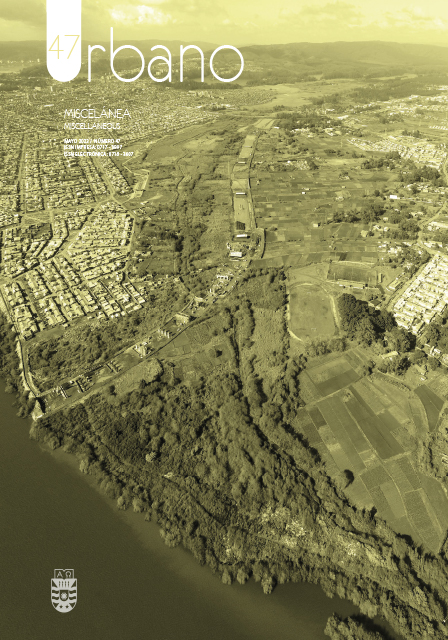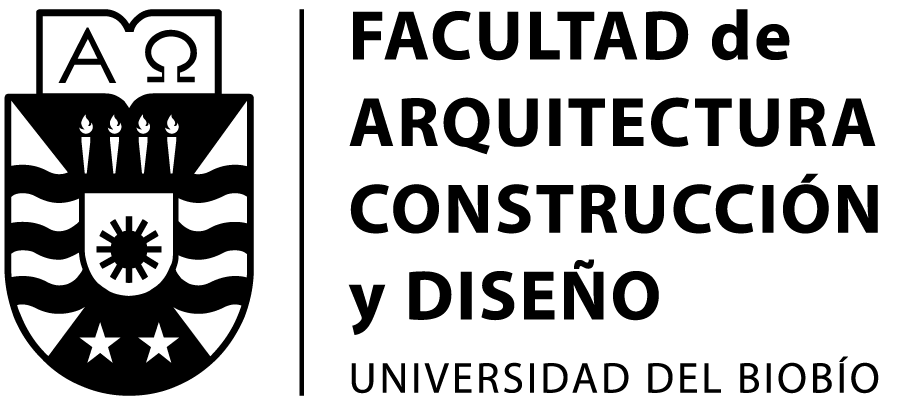Migration in Antofagasta: Living on a porous border as a strategy of resistance
DOI:
https://doi.org/10.22320/07183607.2023.26.47.04Keywords:
marginal spaces, migrant places, porous borderAbstract
Over the last 20 years, the constant increase in the influx of Latin American migrants to Antofagasta has entailed occupying the marginal spaces of the city. In view of this, this article looks at the spaces that they mainly inhabit, asking how they have managed to remain and live in these marginal spaces. The methodological approach is comparative and is structured from the narrative of the migrants themselves, analyzing urban configurations and territorial occupation processes. The main findings indicate that their living transforms marginal spaces into migrant places since, on one hand, they form boundaries between the divergent practices of the State and migrant living and, on the other, they define a condition of porosity, understood as a process of articulation, identity recovery, and demand for the right to inhabit the city. Consequently, living on a porous border is transformed into a strategy of resistance.
Downloads
References
ARDILES, H. (2013). Antofagasta Catalizador del Desarrollo Regional. En Universidad Católica del Norte (Ed.), Región de Antofagasta: Pasado, Presente y Futuro, 109–124: Ediciones Universidad Católica del Norte.
AUGÉ, M. (2000). Los no Lugares. Espacios de Anonimato. Una antropología de la sobremodernidad 5a ed. Editorial Gedisa S.A.
BOLLNOW, F. (1969). Hombre y Espacio. S. A. Editorial Labor, ed. Recuperado de: https://es.scribd.com/document/141946129/Bollnow-Hombre-y-Espacio-2#
CHERMAYEFF, S., & ALEXANDER, C. (1968). Comunidad y privacidad : Hacia una nueva arquitectura humanista. En Ediciones Nueva Visión (Ed.), Ensayos. Arquitectura Contemporánea (Edición en): Talleres Gráficos Grancharoff.
CRAVINO, A. (2014). La noción de heterotopía y su aplicación en el análisis de la enseñanza del proyecto en la Escuela de Arquitectura de Buenos Aires, 1901-1948. Anales Del Instituto de Arte Americano e Investigaciones Estéticas “Mario J. Buschiazzo”, 44(1), 33–48. Recuperado de: http://www.iaa.fadu.uba.ar/ojs/index.php/anales/article/view/130
GARCÉS, A. (2011). De enclave a centralidad. Espacio urbano, comercio y migración peruana en Santiago de Chile. Gazeta de Antropología, 27(2), 1–24. Recuperado de: http://hdl.handle.net/10481/18981
HARVEY, D. (1998). La condición de la posmodernidad. Investigación sobre los orígenes del cambio cultural, Buenos Aires, Amorrortu, pp. 401. Recuperado de: https://flacso.edu.ec/cite/media/2016/02/Harvey-D_1990_La-condicion-de-la-posmodernidad-Investigacion-sobre-los-origenes-del-cambio-cultural.pdf
HARVEY, D. (2013). Ciudades rebeldes: Del derecho de la ciudad a la revolución urbana. En Ediciones Akal S.A. (Ed.). Recuperdo de: https://cronicon.net/paginas/Documentos/CIUDADES_REBELDES.pdf
HEIDEGGER, M. (1956). Construir, Habitar, Pensar. Recuperado el 23 marzo, 2021, de Casiope website: https://wiki.ead.pucv.cl/images/7/70/Construir_habitar_pensar_heidegger.pdf
HURTADO, J. (2000). Metodología de la Investigación Holística (Tercera Ed; F. Sypal, Ed.). Recuperado de: https://ayudacontextos.files.wordpress.com/2018/04/jacqueline-hurtado-de-barrera-metodologia-de-investigacion-holistica.pdf
HUSSERL, E. (1982). La Idea de la Fenomenologia. FCE. Recuperado de: https://es.scribd.com/book/351482229/La-idea-de-la-fenomenologia
INE. (2018). Características de la inmigración internacional en Chile, Censo 2017. Recuperado de: www.ine.cl
LEFEBVRE, H. (2013). La Producción del Espacio. Capitán Swing Libros, Ed. Recuperado de: https://es.scribd.com/doc/212317945/Henri-Lefebvre-La-produccion-del-espacio
LÖW, M. (2008). The constitution of space: The structuration of spaces through the simultaneity of effect and perception. European Journal of Social Theory, 11(1), 25–49. DOI: https://doi.org/10.1177/1368431007085286
MASSEY, D. (2001). Space, Place and Gender (3a ed.; University of Minneapolis, Ed.). University of Minneapolis Press.
NORBERG-SCHULZ, C. (1980). Existencia, Espacio, Arquitectura. Blume.
PAASI, A. (2005). Generations and the “development” of border studies. Geopolitics, 10(4), 663–671. DOI: https://doi.org/10.1080/14650040500318563
POLANYI, K. (2007). La Gran Transformación. Quipu Editorial. Recuperado de: www.quipueditorial.com.ar
RAPOPORT, A. (1978). Aspectos Humanos de la Forma Urbana. Gustavo Gili.
SASSEN, S. (2003). RESUMEN: Los Espectros de la Globalización. Fondo de la Cultura Económica, 7–274.
SILVA, J., & LUFIN, M. (2013). Approaches to the Afro-Colombian Experience in Chile: South-South Immigration Toward the Northern Regions. Journal of Black Studies, 44(3). DOI: https://doi.org/10.1177/0021934713476890
STAVRIDES, S. (2006). Urban Porosity and the Right to a Shared City. In Sophie Wolfrum (Ed.), Porous City. From Metaphor to Urban Agenda, 1st ed., 32–37. Birkhauser.
STEFONI, C. (2005). Comunidades Transnacionales y la emergencia de nuevas oportunidades económicas. De empleados a microempresarios. XIX. In Persona y Sociedad, 183–197.
STEFONI, C. (2015). Convivencia y migración en el centro de Santiago. En Menara Guizardi (Ed.), Las Fronteras del Transcionalismo. Limites y desbordes de la experiencia migrante en el centro y norte de Chile, 84–107. Ocho Libros Editores.
STEFONI, C., & STANG, F. (2017). La construcción del campo de estudio de las migraciones en Chile: Notas de un ejercicio reflexivo y autocrítico. Íconos, N° 58. Facultad Latinoamericana de Ciencias Sociales, 109–129. DOI: https://doi.org/http://dx.doi.org/10.17141/iconos.58.2017.2477
TUAN, Y.-F. (2001). Space and Place. University of Minnesota Press.
VERGARA-PERUCICH, F. (2018). El Derecho a la Ciudad desde Los Arenales. DOI: https://doi.org/10.13140/RG.2.2.30228.55687
WACQUANT, L. (2007a). Los Condenandos de la Ciudad. Gueto, periferias y Estado. Siglo XXI Editores. Recuperado de: https://redmovimientos.mx/wp-content/uploads/2020/07/Los-Condenados-de-la-Ciudad.pdf
WACQUANT, L. (2007b). Parias Urbanos: Marginalidad en la ciudad a comienzos del milenio. Manantial. Recuperado de: https://redpaemigra.weebly.com/uploads/4/9/3/9/49391489/lo%C3%AFc_wacquant_-_parias_urbanos_-_marginalidad_en_la_ciudad_a_comienzos_del_milenio.pdf
WACQUANT, L., SLATER, T., & PEREIRA, V. (2014). Estigmatización territorial en acción. Revista INVI, 29(82), 219–240. DOI: https://doi.org/10.4067/S0718-83582014000300008
ZUMTHOR, P. (2004). Enseñar arquitectura, aprender arquitectura. En Pensar la Arquitectura, 55–58, GG.
Downloads
Published
How to Cite
Issue
Section
License
Copyright (c) 2023 Carolina Andrea Arriagada-Sickinger, Yasna Contreras-Gatica

This work is licensed under a Creative Commons Attribution-ShareAlike 4.0 International License.
The content of articles which are published in each edition of Habitat Sustentable, is the exclusive responsibility of the author(s) and does not necessarily represent the thinking or compromise the opinion of University of the Bio-Bio.
The author(s) conserve their copyright and guarantee to the journal, the right of first publication of their work. This will simultaneously be subject to the Creative Commons Recognition License CC BY-SA, which allows others to share-copy, transform or create new materials from this work for non-commercial purposes, as long as they recognize authorship and the first publication in this journal, and its new creations are under a license with the same terms.![]()























